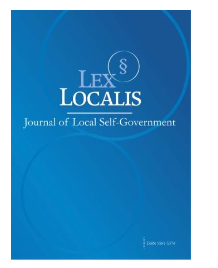INTERNATIONALIZATION OF HIGHER VOCATIONAL EDUCATION IN SHANXI: THE IMPACT OF THE COMPREHENSIVE INTERNATIONALIZATION MODEL AND RISK MANAGEMENT
DOI:
https://doi.org/10.52152/zkdt4p56Ključne besede:
Internationalization, Higher Vocational Education, Comprehensive Internationalization Model, Risk Management, PLS-SEM, Shanxi, Student Mobility, CollaborationPovzetek
The internationalization of higher vocational education (IHVE) is essential for enhancing institutional quality and competitiveness. This study examines IHVE in Shanxi Province, China, through the Comprehensive Internationalization Model (CIM), focusing on six factors Articulated Institutional Commitment (AIC), Administrative Leadership, Structure, and Staffing (ALSS), Curriculum, Co curriculum, and Learning Outcomes (CCLO), Faculty Policies and Practices (FPP), Student Mobility (SM), and Collaboration and Partnership (CP) and introduces Risk Management (RM) as a mediator. Partial least squares structural equation modeling (PLS-SEM) results show that AIC, ALSS, CCLO, SM, and CP each have significant direct effects on IHVE (p < 0.001), whereas FPP does not. Among these, SM and CP exert the strongest influences. Furthermore, RM mediates all six relationships, particularly strengthening the effects of CCLO and SM on IHVE. These findings indicate that integrating RM frameworks alongside investments in mobility, partnerships, and curriculum alignment can create more resilient and effective internationalization strategies. This research provides actionable guidance for policymakers and leaders seeking to foster sustainable global engagement in higher vocational institutions.
Prenosi
Objavljeno
Številka
Rubrika
Licenca
Avtorske pravice (c) 2025 Lex localis - Journal of Local Self-Government

To delo je licencirano pod Creative Commons Priznanje avtorstva-Nekomercialno-Brez predelav 4.0 mednarodno licenco.








